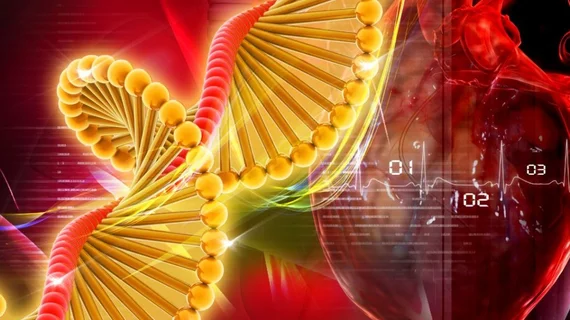A new study in JAMA Cardiology uncovered a set of genetic variants that are almost exclusive to people of African ancestry and may explain their higher risk of adverse events related to dilated cardiomyopathy (DCM).
Among Americans, blacks have the highest incidence of heart failure in general as well as idiopathic dilated cardiomyopathy (IDC), noted senior author Arthur M. Feldman, MD, PhD, with Temple University in Philadelphia, and colleagues.
“The increased prevalence of DCM in U.S. people of African ancestry has been attributed to a diverse set of medical and sociologic factors, including neighborhood, and a higher burden of cardiovascular risk factors, including diabetes mellitus, hypertension, cholesterol, smoking status, and ventricular hypertrophy,” the researchers wrote. “Several observations, however, suggest that the increased incidence of IDC may also be attributed to genetic risk factors.”
Feldman et al. obtained genomic DNA data from 509 African-Americans with dilated cardiomyopathy enrolled in three different U.S. studies. They compared the results to more than 60,000 people of European ancestry as well as a reference population of black participants without DCM.
About 10 percent of the individuals in the initial cohort had variations of the Bcl2-associated anthanogene 3 (BAG3) gene—similar to the proportion found among blacks without DCM. However, only about 0.02 percent of the 60,000-plus people of European ancestry had one of the four BAG3 variants.
For the cohort with DCM, those who carried at least one variant had about double the risk of death or heart failure-related hospitalization compared with noncarriers.
“This study demonstrates that genetic variants in BAG3 found almost exclusively in individuals of African ancestry were not causative of disease but were associated with a negative outcome in patients with a dilated cardiomyopathy through modulation of the function of BAG3,” Feldman and colleagues reported. “The results emphasize the importance of biological differences in causing phenotypic variance across diverse patient populations, the need to include diverse populations in genetic cohorts, and the importance of determining the pathogenicity of genetic variants.”
The researchers also performed further testing of BAG3 proteins in human heart muscle cells as well as living mouse hearts. In both scenarios, the genetic mutations were linked to worsening heart failure effects.
“Normally BAG3 functions to protect and preserve heart muscle cells by blocking apoptosis and helping cells clear out misfolded proteins and damaged organelles,” lead author Valerie D. Myers, MS, who wrote a doctoral thesis on the subject, said in a press release.
When the BAG3 are mutated, the authors explained, it hinders the mechanism by which cells clear out damaged components and potentially harmful debris.
However, the researchers were able to restore mouse hearts to normal or near-normal function by replacing the mutated genes with normal BAG3. Feldman and colleagues are working to develop a gene therapy treatment specifically for patients with BAG3 deficiencies, according to the release.

